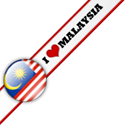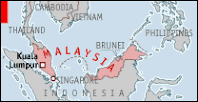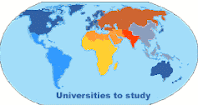
The modern nation of Malaysia consists of the southern half of the Malay Peninsula and the states of Sarawak and Sabah on the northern coast of the island of Borneo. Each of the three components were British colonies, with Malaysia obtaining its independence in 1957. Sabah, Sarawak, and Singapore obtained their independence six years later and joined with Malaysia to create the Federation of Malaysia. At this time, the Sultanate of Brunei (also on Borneo) declined the invitation to join the federation. Singapore was expelled from the federation in 1965.
The present state of Malaysia covers 125,584 square miles, comparable to the area of the state of New Mexico. In 2008, it had a population of approximately 25.3 million. The country’s people are ethnically diverse, with Malays constituting 50.8 percent, Chinese 23.8 percent, and Indians 7.1 percent. About 10 percent of the people, primarily residing in Sarawak, are indigenous people who have inhabited the land since prehistoric times. Religiously, the country is about 69 percent Muslim, with almost all Malays professing Sunni Islam. Most of Malaysia’s Muslims, including immigrants from Indonesia, follow the shafii legal school, which was introduced in the 15th century. Islam is also the religion of many of the Indo-Pakistani community, and about one-third of the indigenous people of Sarawak. Sufism has broad popularity in the country, and there is also a sizeable community of Shii Muslims. Buddhism is professed by about 20 percent of the people, overwhelmingly Chinese. Most of the Indians are Hindus from southern india. Christianity has made an impact primarily among the non-Malay half of the population, and now claims about 9 percent of the population.
From the first century c.e., Malaysia experienced migrations from both China and India and it became the home of kingdoms with Hindu and Buddhist roots. In the 15th century, following the opening of the port of Malacca on the peninsula’s west coast, the first conversions to Islam were reported. Through the next century, Islam gradually replaced Buddhism as the dominant faith on the peninsula, and a set of states was established, each headed by a sultan. Islam’s initial converts included some among the aristocratic class on the peninsula. It spread among this class over several centuries, often through marriage alliances.
Beginning in the 16th century, a variety of European colonial powers moved into the region. In 1511 the Portuguese seized Malacca. In the next century, the Dutch, in alliance with the sultan of Jahor, drove the Portuguese out. At the end of the 18th century, the British established their trading colony on the northern shore of Borneo and, in 1819, purchased Singapore from the sultan of Jahore, which they managed as an outpost to secure passage through the Straits of Malacca and the Singapore Straits. Shortly thereafter the British concluded a treaty with the Dutch guaranteeing the latter’s hegemony in the East Indies (now indonesia).
Through the 19th century the British controlled the ports of Penang, Malacca, and Singapore into which they encouraged immigration from China and India to provide cheap labor for the tin mines and rubber plantations. Beginning in 1870 the British encouraged the formation of protectorates over the several sultanates on the Malaysian Peninsula and later in the northern half of Borneo (including Brunei). British rule was not welcomed by many Malays, including Muslim religious leaders who regarded the British as kafirs (disbelievers). The Japanese invaded and occupied the region during World War II. After the war continuation of British colonial rule became increasingly untenable, which led to independence in stages through the 1950s and 1960s. With independence in 1957, Islam was named the state religion. The National Mosque (Masjid Negara), completed in 1965, serves as a symbol of Islam, the country’s dominant faith.
Malaysia is a constitutional monarchy consisting of 13 states and one federal territory. Each state has a parliament and a chief minister. The chief ministers of nine of the states are hereditary rulers known as sultans who also oversee the Islamic affairs of their respective states. Every five years there is an election and one of them is selected as monarch. There are four states (Penang, Malacca, Sabah, and Sarawak) that are governed by chief ministers appointed by the government. There is also a national parliament elected by the people with the prime minister the highest elected official. Sarawak and Sabah have no designated head of Islam, but the king oversees the religious affairs of Penang and Malacca.
In 1965 a council for Islamic affairs was created. Operating out of the prime minister’s office, it coordinates the efforts of the state councils, which advise the sultan on religious matters. The state and national legislatures have some power in legislating for the Muslim community. The constitution of Malaysia contains a provision affirming freedom of religion. At the same time, Islam is the official state religion. The practice of forms of Islam other than Sunni Islam is restricted significantly. Hari Raya Puasa (the end of the fasting season of ramadan), Hari Raya Qurban (the Feast of the Sacrifice at the end of the haJJ pilgrimage), and the Prophet Muhammad’s birthday (mawlid) have been designated official national holidays. The issue of Muslims wishing to convert to another faith, primarily Buddhism or Christianity, has been a sensitive one in Malaysia. Ethnic Malays must overcome particularly difficult obstacles to leave the Islamic faith for another religion. In 2001 a High Court judge ruled that the constitution defined an ethnic Malay as “a person who professes the religion of Islam.” There are few obstacles to anyone who wishes to convert from Buddhism or Christianity to Islam.
During the last decades of the 20th century and the early 21st century Malaysia has been dominated by the United Malays National Organization (UMNO), seen as the more moderate political party of the Muslim community. It is opposed by the Parti-Islam se-Malaysia (PAS), a more conservative group that has as its stated goal the transformation of Malaysia into an Islamic state that would adhere to sharia law, including its punishments, such as amputation and stoning.
~ J. Gordon Melton








